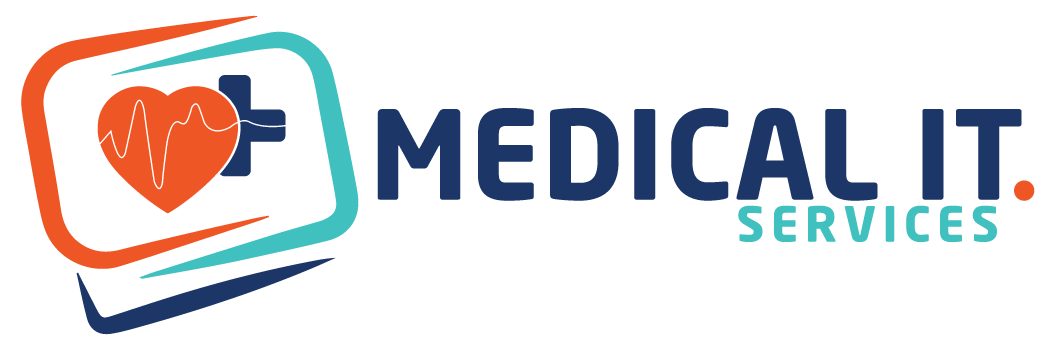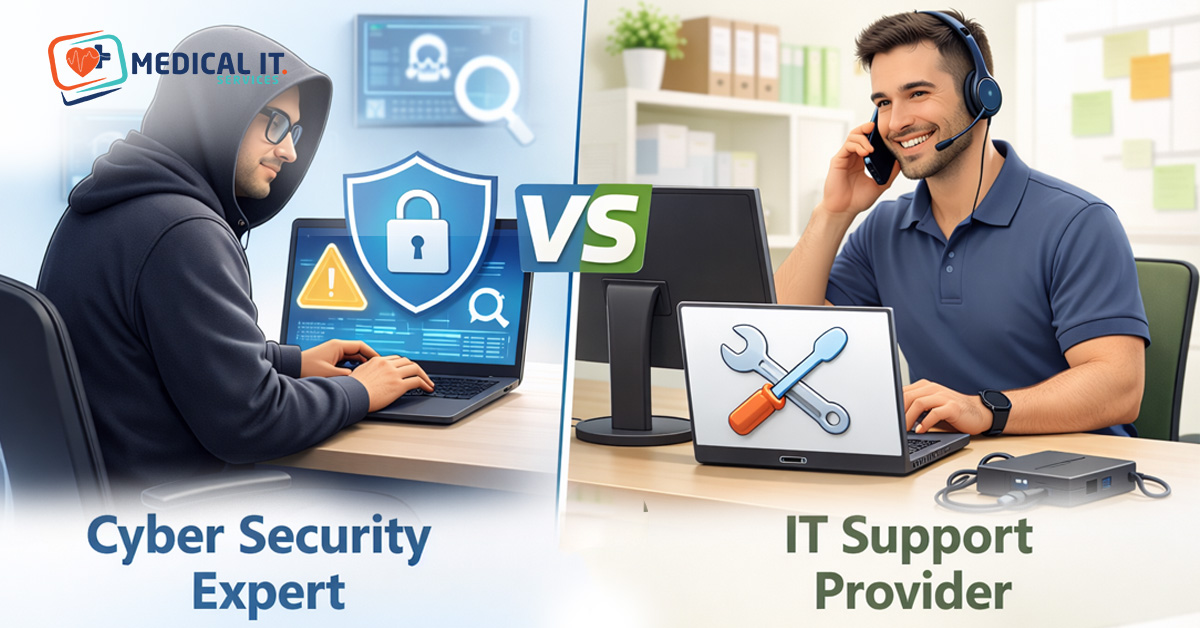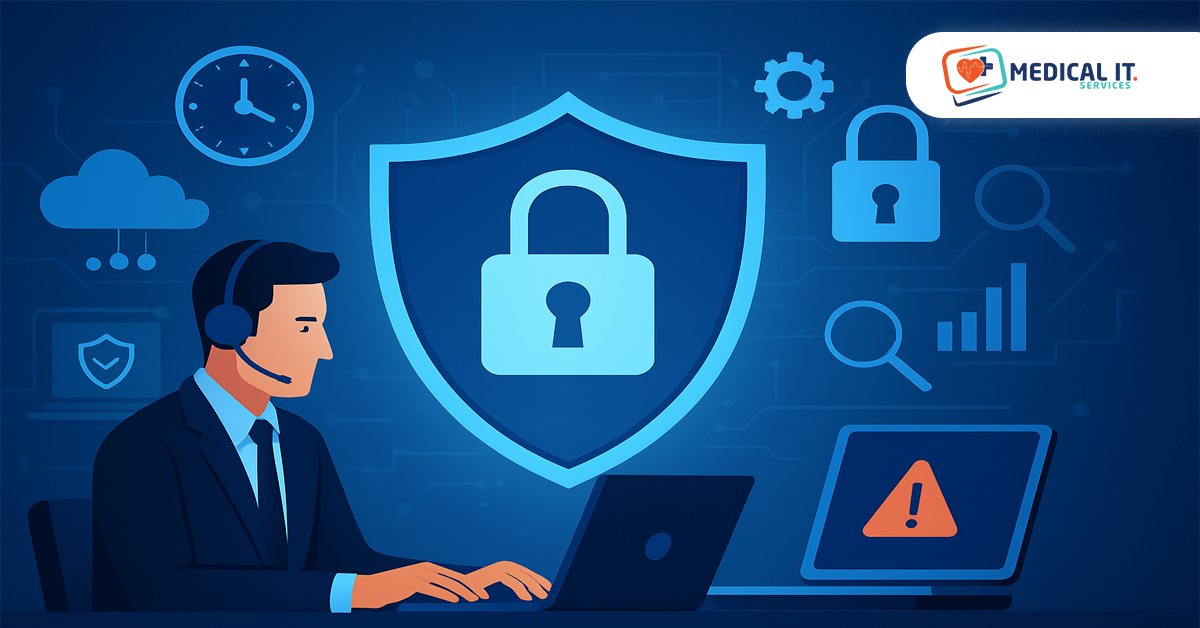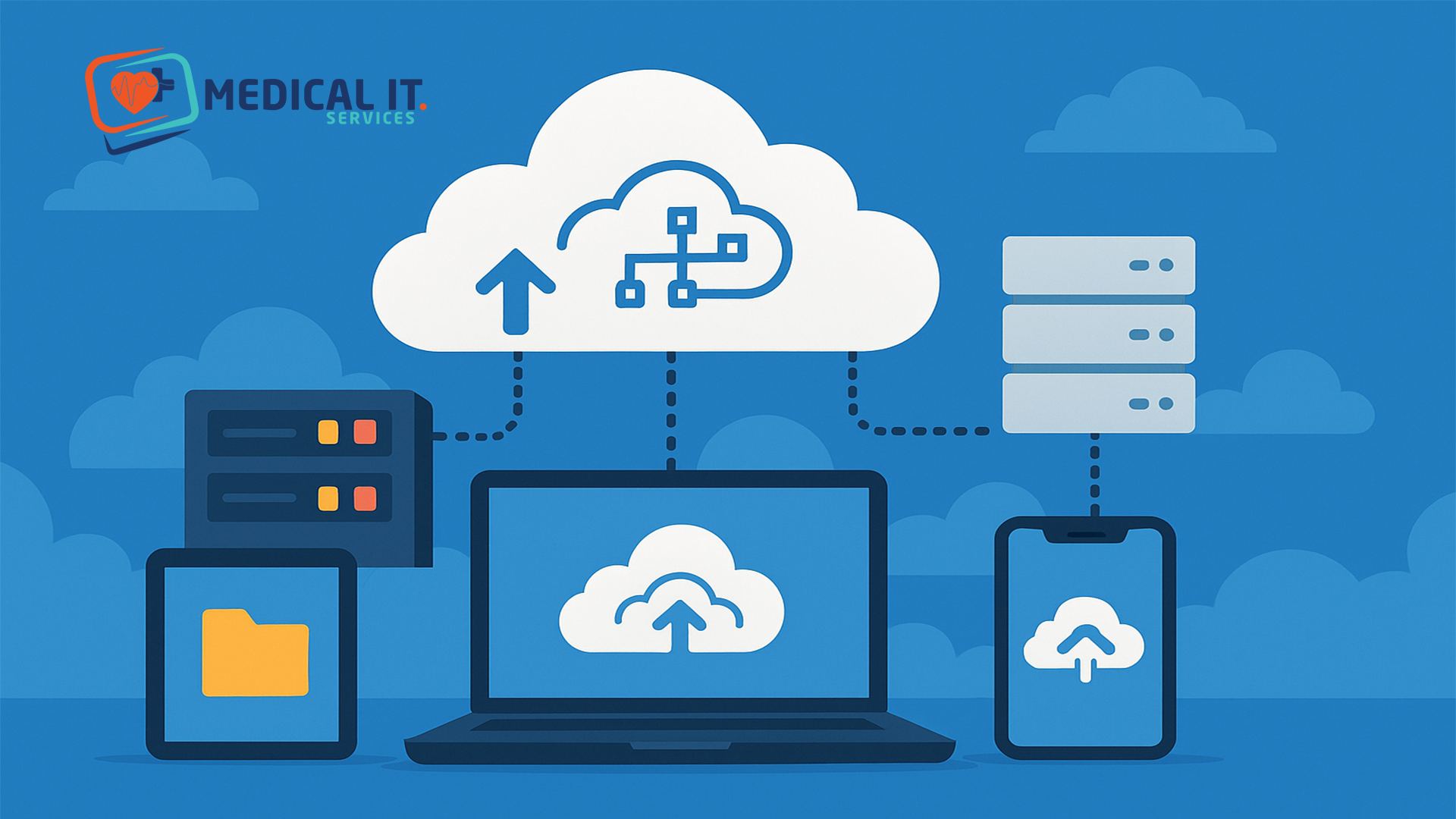Nowadays, everything has become difficult without computers, mobile phones, and the internet. Be it business…
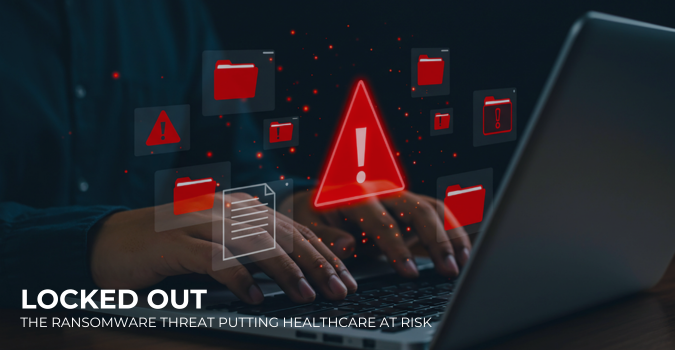
Ransomware in Healthcare: The Hidden Cyber Threat Clinics Can’t Ignore
Healthcare is one of the most important industries in the world. Doctors, nurses, and clinics work every day to save lives and care for patients. But while medical teams are focused on patient care, there is a growing cyber threat that can stop a clinic in its tracks within seconds.
This hidden danger is not just a computer virus.
It is not just an annoying IT problem.
It is ransomware – one of the most dangerous threats in today’s digital world.
Many healthcare providers in Australia do not realise the seriousness of ransomware until it is too late. That is why working with experts in cyber security consulting and investing in strong cyber security services in Australia has become more important than ever.
What Is Ransomware in Simple Terms?
Ransomware is a type of malicious software (malware). Once it enters your computer system, it locks or encrypts all your important files. You can no longer open your data, access patient records, or even run your billing systems.
The attackers then demand a ransom payment (usually in cryptocurrency like Bitcoin). They often include a countdown clock with a scary warning, such as: You have 72 hours to pay. If you don’t, your data will be destroyed forever.
Here is why ransomware is so dangerous for healthcare clinics:
-
It doesn’t just affect one computer. It can spread across your entire network within minutes.
-
Even your backups can be infected if they are not properly secured.
-
It targets your most critical operations – patient files, emails, schedules, and financial records.
This makes ransomware much more destructive than a regular virus.
Why Healthcare Is the Biggest Target for Cybercriminals
You may wonder: why are hackers targeting healthcare more than any other industry? The answer is simple—because it is profitable.
Here are the main reasons:
-
Patient data is highly valuable
-
Medical information includes full names, addresses, Medicare numbers, and sometimes even banking details.
-
Hackers can sell this information on the black market for high profits.
-
-
Outdated IT systems are common in healthcare
-
Many clinics and hospitals still use old computers and unsupported software.
-
These outdated systems are easy for attackers to break into.
-
-
Low cyber awareness among staff
-
Receptionists, admin staff, and even doctors are often not trained in cybersecurity.
-
A single click on a phishing email can bring down the entire clinic.
-
-
Zero tolerance for downtime
-
Unlike other industries, healthcare cannot simply “pause” operations.
-
If patient records are locked, doctors cannot provide safe treatment.
-
This urgency often forces hospitals and clinics to pay ransom quickly, which motivates hackers to keep targeting them.
-
In short, healthcare clinics are seen as a perfect storm of urgency, vulnerability, and opportunity. That is why they need strong cyber security services in Australia to protect against these risks.
Real Consequences of a Ransomware Attack
A ransomware attack is not just an IT issue. It creates real-world problems that affect patients, staff, and the reputation of your entire clinic.
When ransomware strikes a medical practice, the impact is:
-
Patient care delays – Doctors cannot access medical histories, prescriptions, or test results. Treatments may be cancelled or postponed.
-
Mandatory data breach notifications – Every patient whose data may be exposed must be informed. This destroys trust.
-
Legal penalties and compliance fines – Under Australian privacy laws, failing to protect patient data can result in heavy fines.
-
Financial losses – Recovery costs, downtime, hiring experts, and sometimes paying ransom can cost millions.
-
Reputation damage – Once patients know their data was leaked, many will never return to the clinic.
Some clinics in Australia never recover after a major ransomware attack. This is why cyber security consulting is not just a service—it is a survival necessity.
Why Traditional Antivirus Is Not Enough
Many clinics think: We already have antivirus, so we are safe.” But this is a false sense of security.
Modern ransomware is far more advanced than old viruses. It spreads using methods like:
-
Phishing emails – Fake messages designed to trick staff into clicking dangerous links.
-
Infected PDF or Word attachments – Documents that secretly install ransomware.
-
Fake software updates – Pop-ups that look real but install malware instead.
-
Unsecured remote desktop connections – Hackers break in through weak passwords.
-
Outdated operating systems – Old Windows or medical software with known vulnerabilities.
Ransomware is designed to bypass traditional antivirus. That is why healthcare clinics need a multi-layered cyber defence system provided by cyber security services in Australia.
Layered Defence With Cyber Security Services
To stay protected, healthcare clinics must go beyond simple antivirus and adopt a layered cyber defence strategy.
Here are the key elements of professional cyber security consulting for healthcare:
-
Managed Endpoint Protection
-
Advanced protection for every device.
-
Detects unusual behaviour (not just known viruses).
-
Stops ransomware before it spreads.
-
-
Email Security Filtering
-
Blocks phishing emails and malicious attachments.
-
Ensures dangerous links never reach your staff inbox.
-
-
Automated Patch Management
-
Keeps all computers and medical systems updated automatically.
-
Closes security gaps before hackers can exploit them.
-
-
Secure Offsite Backups
-
Stores your patient data in a separate, secure location.
-
Allows you to recover your systems without paying ransom.
-
-
Staff Cyber Awareness Training
-
Teaches your team how to spot fake emails, scams, and phishing attempts.
-
Builds a “human firewall” as your first line of defence.
-
-
24/7 Monitoring & Incident Response
-
Constant monitoring of your network for suspicious activity.
-
Immediate response if an attack happens—even at night or on weekends.
-
This is what makes cyber security services in Australia so effective—they provide a complete shield against modern threats.
Why Choose Cyber Security Services Australia for Healthcare?
Running a clinic is stressful enough—you should not have to worry about hackers. That’s why cyber security consulting is so valuable.
At Medical IT Services, we specialise in cyber security services in Australia tailored specifically for medical practices.
Here’s what sets us apart:
-
We make sure your systems are compliant with Australian privacy and health regulations.
-
We use a proactive approach, stopping attacks before they happen.
-
We provide affordable protection—far less expensive than paying ransom or fines.
-
We deliver customised solutions for both small practices and large hospitals.
Our mission is simple: to help healthcare providers focus on patients, while we take care of cyber security.
Take Action Now – Don’t Wait for a Ransomware Attack
Cybercrime in Australia is increasing every year. Hackers are not targeting “big companies only”—they are going after clinics of all sizes.
The truth is:
-
If you are not prepared, a ransomware attack is only a matter of time.
-
If you rely only on antivirus, your clinic is vulnerable.
-
If your staff are not trained, one click can cost you everything.
By working with experts in cyber security consulting and implementing cyber security services in Australia, you can:
-
Protect your sensitive patient data.
-
Stay compliant with privacy laws.
-
Build long-term patient trust.
-
Keep your clinic running smoothly without disruption.
Conclusion
Ransomware is not just an IT issue—it is a business survival issue for healthcare providers. The good news is that with the right cyber security consulting and professional cyber security services in Australia, your practice can stay safe, compliant, and resilient.
Don’t wait until an attack happens. Protect your clinic today with us. For more consultation Contact us Today!
